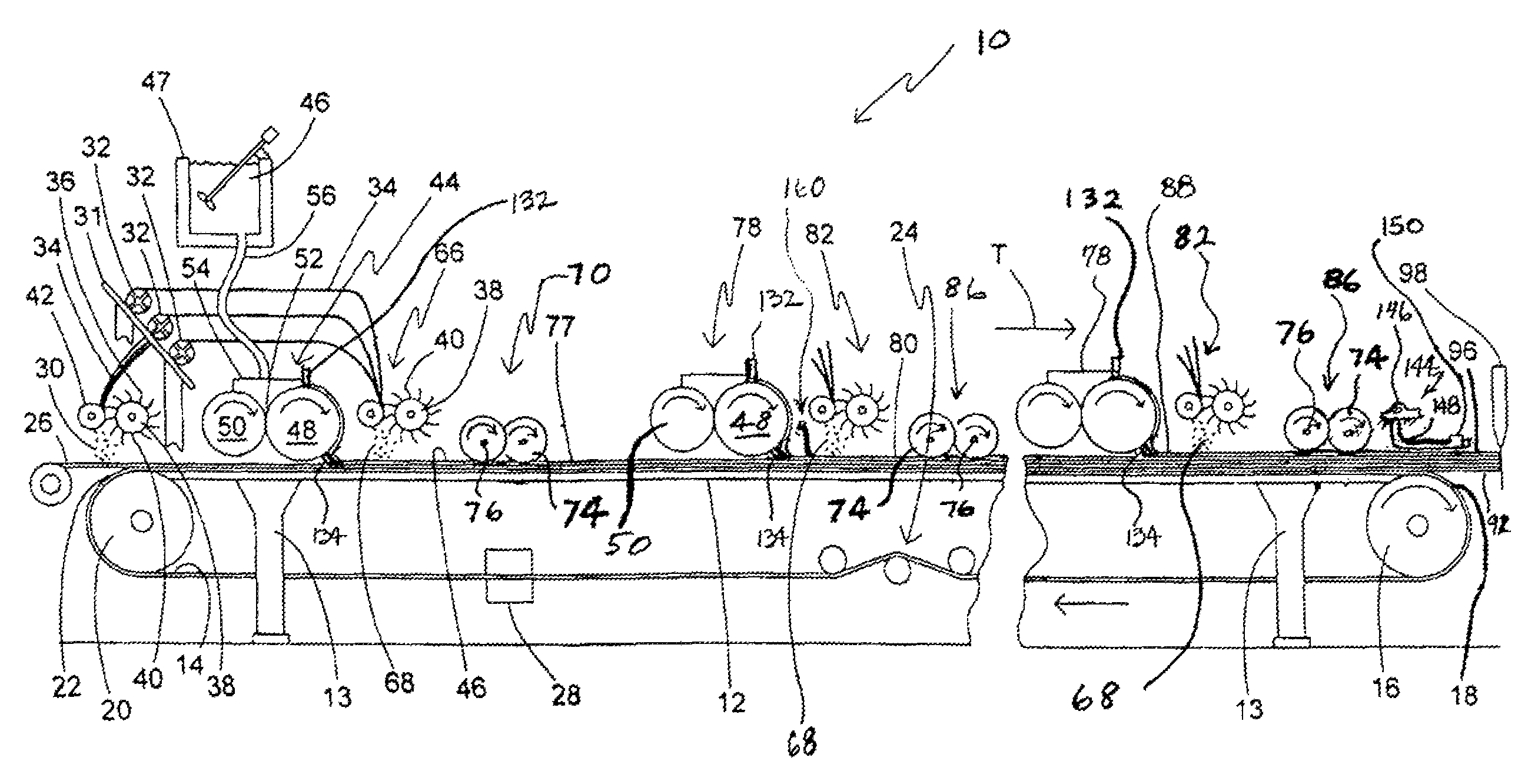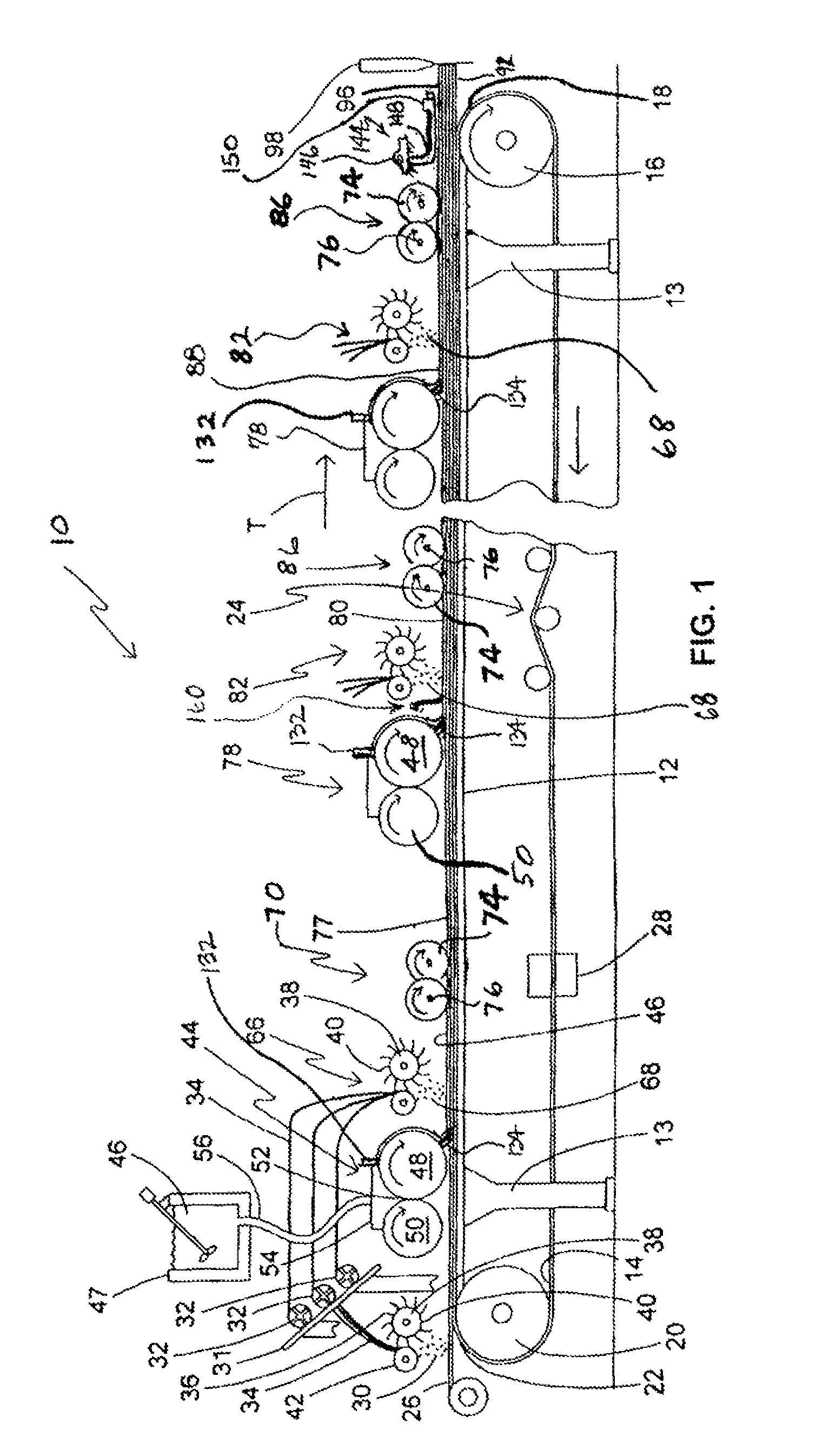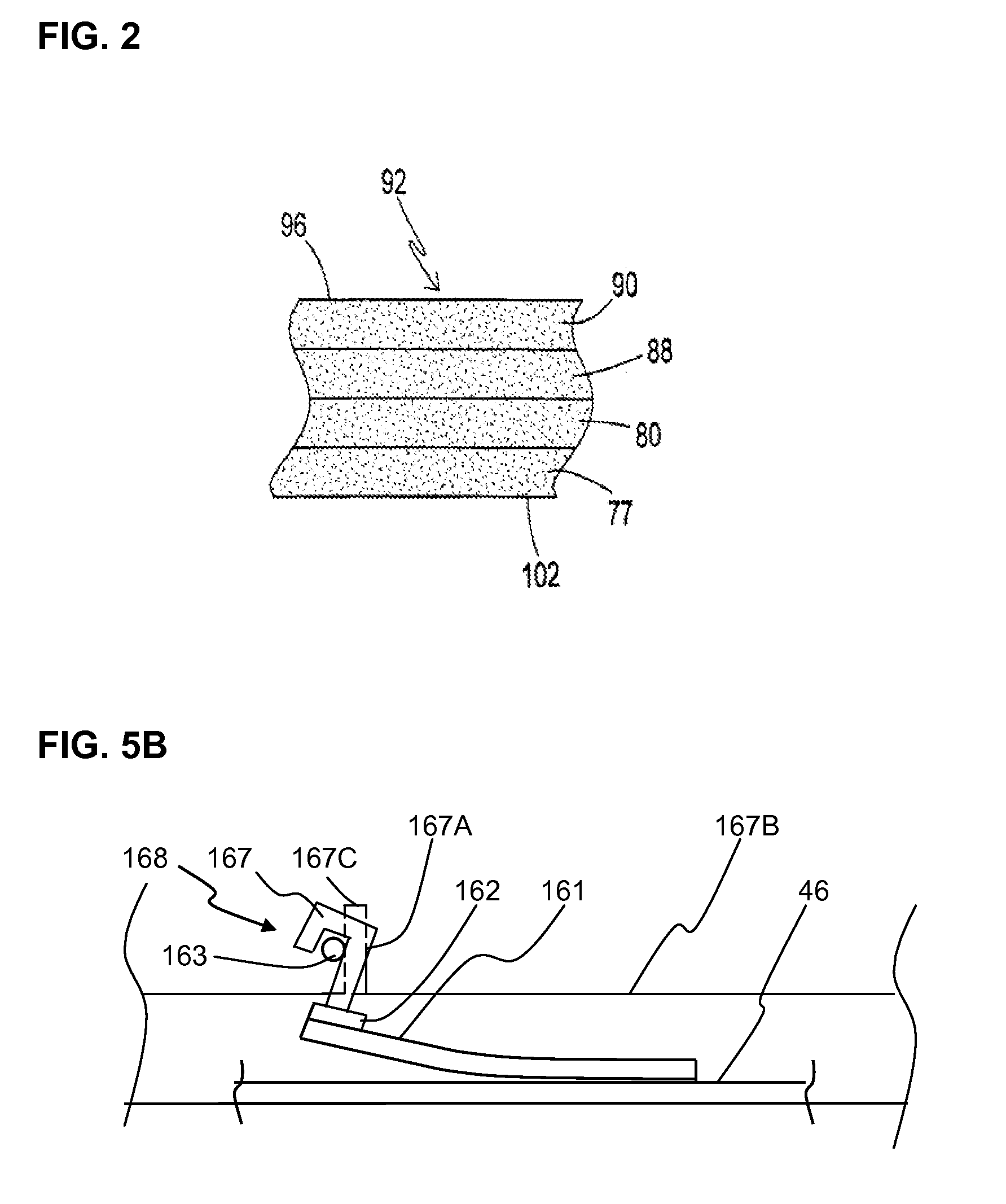Method for smoothing cementitious slurry in the production of structural cementitious panels
a technology of structural cementitious panels and cementitious slurry, which is applied in the direction of surface layering apparatus, sustainable waste treatment, manufacturing tools, etc., can solve the problems of increasing the production cost of cementitious panels, poor panel strength development, and low panel strength, so as to reduce the production equipment and processing time, remove pock marks and grooves, and improve the effect of strength
- Summary
- Abstract
- Description
- Claims
- Application Information
AI Technical Summary
Benefits of technology
Problems solved by technology
Method used
Image
Examples
examples
[0214]An experimental evaluation of the effectiveness of the present slurry smoothing device was conducted. This objective was achieved by manufacturing panels on a commercial production line similar to that shown in FIG. 6 by building up multiple distinct fiber and slurry layers to produce panels of design thickness. The performance of the proposed slurry smoothing device after the second slurry headbox station and before the next fiber chopper station and second embedment device stations, as shown in FIG. 6, was compared with the conventional production line in which only one floating screed plate or shroud is used after the final embedment station in a multiple slurry and chopped fiber layer, as disclosed in co-pending U.S. patent application Ser. No. 11 / 555,661 (United States Patent Application Publication No. 2008 / 0099133) filed Nov. 1, 2006. The results of large size defects (FIGS. 8 and 9) as well as smaller size but still significant defects from smaller air holes (FIG. 10),...
example formulation
[0215]Standard SCP formulation shown in Tables A and B, above, were used to manufacture all panels. The reactive powder used was a blend of ASTM Type III Portland cement, alpha hemihydrate, silica fume and lime. Hollow ceramic spheres were used as lightweight fillers to reduce the material / panel density. Polynapthalene sulfonate type superplasticizer was used as the water-reducing admixture. Alkali-resistant glass fibers chopped from a continuous roving with designation NEG ARG-103 (procured from Nippon Electric Glass Company, North America) were used as the reinforcing fibers. For this continuous roving, the roving tex was 2500 and the strand tex was 80. Each fiber strand was an assemblage of 200 alkali-resistant glass fiber monofilaments. The length of the fibers used was 40 mm.
[0216]The SCP slurry used in the practice of this invention has a density of about 78 to 82 pounds per cubic foot compared to a gypsum board slurry used in typical fiberglass reinforced gypsum board of abou...
example results
[0220]A fiber embedment device must effectively embed a distinct layer of fiber network into a distinct layer of slurry for producing fiber reinforced cementitious panels.
[0221]To have desirable product, USG's FORTACRETE Product Bulletin 14-07-001 at page 4 provides the current “VISUAL APPEARANCE SPECIFICATIONS and testing frequency for SCP panel production online observations for slurry spread:
Slurry Spread Definition: Uniform and continuous slurry headbox output visually apparent in the field of the board. No visually noticeable unusual slurry distribution or patterns should be present in the field or edges.
Reject Specification Panels containing such characteristics must be put on hold and must be released / rejected based on the results from the quality control testing on the final panel.”
[0222]The above description of the visual testing refers to unusual slurry distribution including the times when the slurry curtain coming off the doctor blade “breaks” for any reason and a long s...
PUM
| Property | Measurement | Unit |
|---|---|---|
| pressure | aaaaa | aaaaa |
| pressure | aaaaa | aaaaa |
| particle size | aaaaa | aaaaa |
Abstract
Description
Claims
Application Information
 Login to View More
Login to View More - R&D
- Intellectual Property
- Life Sciences
- Materials
- Tech Scout
- Unparalleled Data Quality
- Higher Quality Content
- 60% Fewer Hallucinations
Browse by: Latest US Patents, China's latest patents, Technical Efficacy Thesaurus, Application Domain, Technology Topic, Popular Technical Reports.
© 2025 PatSnap. All rights reserved.Legal|Privacy policy|Modern Slavery Act Transparency Statement|Sitemap|About US| Contact US: help@patsnap.com



